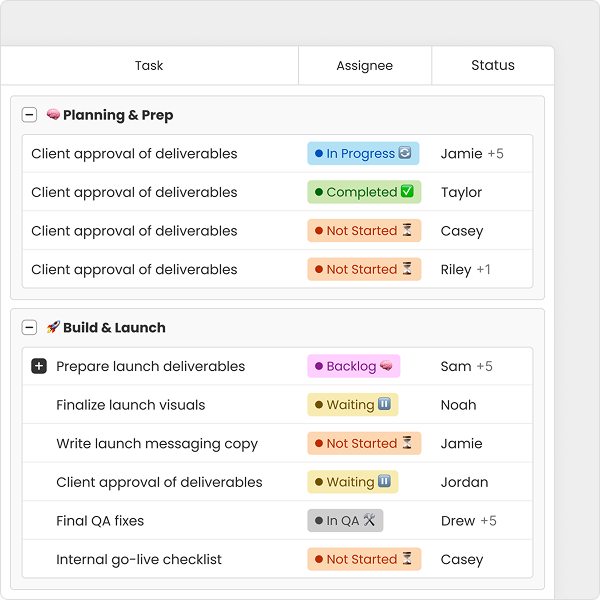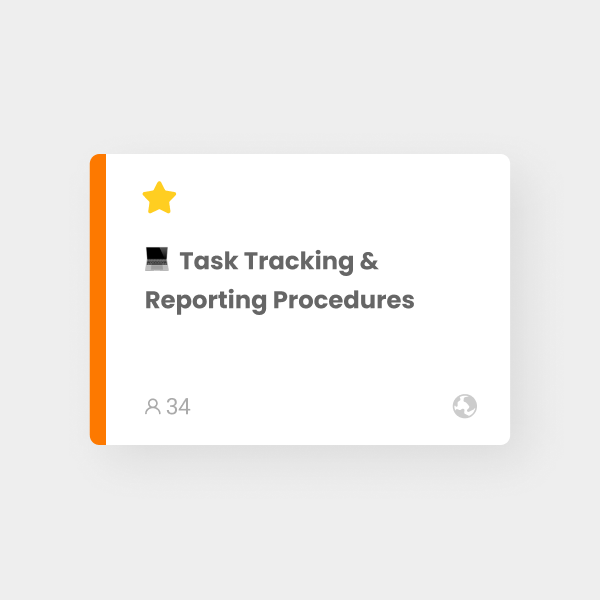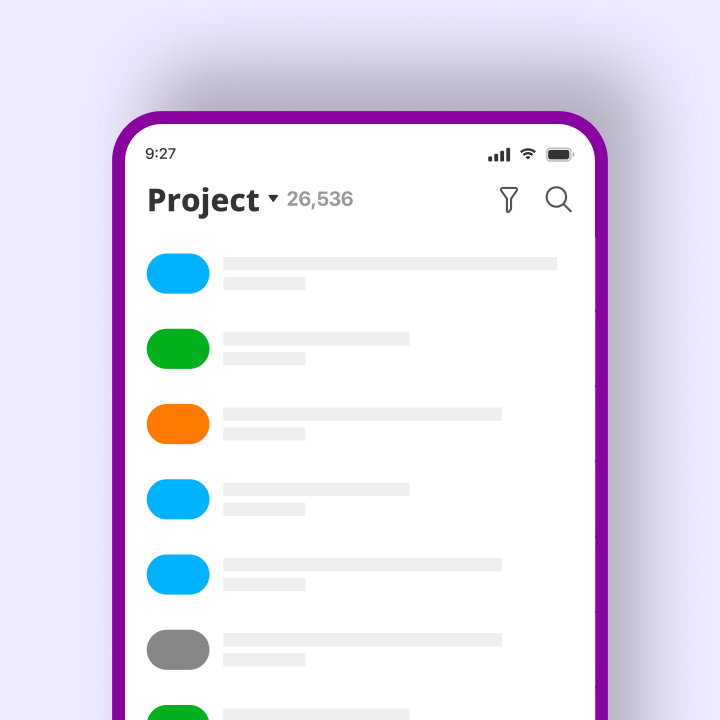Project management can be daunting without a clear plan. The Project Management Body of Knowledge (PMBOK) offers a structured approach through its five process groups, guiding project managers through complex projects from start to finish and ensuring that no detail is overlooked.
Whether you are an experienced project manager or just beginning your career, grasping these five process groups is vital for consistently delivering successful projects. Let’s delve into how these groups work together to form a comprehensive project management strategy.
The Importance of Process Groups in Project Management
Process groups are the foundation of effective project execution. They provide a logical sequence of activities that help project managers navigate each phase of a project’s lifecycle. Without this structure, projects can easily fall victim to scope creep, budget overruns, and missed deadlines.
The strength of the PMBOK process groups lies in their versatility. Whether you are managing a software development project, a construction initiative, or a marketing campaign, these five groups offer the framework necessary to maintain control and achieve results.
Additionally, these process groups foster accountability and transparency. Each group has specific deliverables and checkpoints that keep stakeholders informed about project progress, enabling them to make informed decisions. This structured approach minimizes risks and enhances the chances of project success.
An Overview of PMBOK and Its Process Groups
The Project Management Institute (PMI) created the PMBOK Guide as the global standard for project management practices. Within this framework, the five process groups represent different phases of project management activities, which may not always follow a strict chronological order.
It’s important to note that these process groups are iterative and can overlap. While initiation typically occurs first and closing last, planning, executing, and monitoring often happen simultaneously throughout the project lifecycle. This flexibility allows project managers to adapt to changing circumstances while maintaining a structured approach.
The PMBOK process groups work alongside ten knowledge areas, forming a comprehensive matrix that addresses all aspects of project management. This thorough approach ensures that project managers consider every critical element necessary for success.
A Closer Look at the 5 Process Groups
1. Initiating Process Group
The initiating process group marks the official start of a project or project phase. This crucial stage lays the groundwork for everything that follows, making it essential to get it right from the beginning.
Key Objectives and Activities
During initiation, project managers focus on defining the project’s purpose, identifying stakeholders, and obtaining formal authorization to proceed. The primary deliverable from this phase is usually a project charter, which serves as the project’s guiding document.
Key activities include conducting feasibility studies, defining high-level requirements, identifying key stakeholders, and establishing initial scope boundaries. Project managers also work to understand the business case and ensure alignment with organizational goals.
This process group also involves appointing the project manager and assembling the core project team. Forming the team early helps establish communication channels and working relationships that will be vital throughout the project.
Common Challenges in Initiation
Many projects struggle during initiation due to unclear objectives or insufficient stakeholder engagement. Without proper initiation, projects often lack direction and face resistance from team members and stakeholders who do not understand the project’s value.
Another common challenge is the tendency to rush through initiation to start “real work” quickly. This approach often backfires, as taking the time to initiate properly saves significant effort and resources later in the project lifecycle.
2. Planning Process Group
The planning process group encompasses the most processes of all five project management groups. This phase involves creating a comprehensive project management plan that guides execution and control activities.
Essential Planning Components
Effective planning includes defining the scope, developing a schedule, creating a budget, identifying risks, planning for quality, and allocating resources. Each element must be carefully considered and integrated to form a cohesive project plan.
The planning process group produces numerous deliverables, including the work breakdown structure, project schedule, budget, risk register, and communication plan. These documents serve as roadmaps for the entire project team.
Planning also involves establishing baselines for scope, schedule, and cost. These baselines become reference points for measuring project performance during monitoring and controlling activities.
Tools Used During Planning

Modern project managers have access to a variety of planning tools, from traditional Gantt charts to advanced project management software. The choice of tools depends on project complexity, team size, and organizational preferences.
Risk assessment techniques, stakeholder analysis frameworks, and estimation methods all play crucial roles during planning. The key is to select the right combination of tools and techniques for each specific project situation.
3. Executing Process Group
The executing process group focuses on coordinating resources and activities to implement the project management plan. This is where the project’s deliverables are created, and where most of the project budget is typically spent.
Managing Teams and Deliverables
During execution, project managers lead the project team, manage stakeholder expectations, and ensure that deliverables meet quality standards. This requires strong leadership and communication skills, as well as the ability to make quick decisions when issues arise.
Team management is particularly important during execution. Project managers must motivate team members, resolve conflicts, and ensure everyone understands their roles and responsibilities. Regular team meetings and clear communication channels are essential.
The executing process group also involves implementing approved changes, conducting procurement activities, and managing vendor relationships when external resources are involved.
Quality Assurance in Execution
Quality assurance activities run parallel to deliverable creation during the executing process group. This includes implementing quality control measures, conducting reviews, and ensuring that deliverables meet specified requirements.
Quality assurance is not just about final deliverables; it also encompasses process quality. Project managers must ensure that established procedures are followed and that the project management plan is executed as intended.
4. Monitoring and Controlling Process Group
The monitoring and controlling process group operates alongside executing activities, providing oversight and corrective action as needed. This ongoing process ensures that projects stay on track and meet their objectives.
Tracking Scope, Cost, and Timeline
Effective monitoring involves regularly measuring project performance against established baselines. This includes tracking budget expenditures, monitoring schedule progress, and ensuring that scope deliverables are completed as planned.
Performance measurement requires reliable data collection and analysis systems. Project managers must establish metrics that provide meaningful insights into project health and enable proactive decision-making.
Regular status reporting keeps stakeholders informed and allows for early identification of potential problems. These reports should be tailored to different audiences and provide actionable information.
Change Control and Reporting
Change is inevitable in most projects, making change control a critical component of monitoring and controlling activities. This involves evaluating change requests, assessing their impact, and implementing approved changes in a controlled manner.
The change control process must balance flexibility with stability. While projects need to adapt to changing circumstances, uncontrolled changes can derail even the best-planned initiatives.
5. Closing Process Group
The closing process group formally concludes the project or project phase. While often overlooked, proper closure is essential for organizational learning and stakeholder satisfaction.
Project Handover and Documentation
Closing activities include finalizing all deliverables, obtaining stakeholder acceptance, and transitioning project outputs to operational teams. This handover process ensures that project benefits are realized after the project team disbands.
Compiling and archiving documentation is a crucial part of closing. Project documents, lessons learned, and performance data should be preserved for future reference and organizational learning.
Administrative closure involves releasing project resources, closing contracts, and completing final financial reconciliations. These activities ensure a clean project completion without lingering commitments.
Capturing Lessons Learned
Lessons learned sessions provide valuable insights for future projects. These sessions should involve key project stakeholders and focus on both successes and areas for improvement.
The lessons learned process should be structured and systematic, capturing specific, actionable insights rather than general observations. This information becomes part of the organization’s project management knowledge base.
Process Groups vs. Knowledge Areas
Grasping the connection between process groups and knowledge areas is essential for successful project management. Process groups indicate when activities take place, while knowledge areas define what activities are involved.
Overview of the 10 PMBOK Knowledge Areas
The ten PMBOK knowledge areas are integration, scope, schedule, cost, quality, resource, communications, risk, procurement, and stakeholder management. Each area encompasses specific processes that may span multiple process groups.
For instance, risk management activities start during the initiation phase, continue through planning, and persist into monitoring and controlling. This interconnectedness illustrates how knowledge areas and process groups collaborate to ensure comprehensive project management.
Mapping Project Management Process Groups to Knowledge Areas
The overlap of process groups and knowledge areas forms a matrix containing 49 distinct processes. This mapping guarantees that all facets of project management are systematically addressed.
By understanding this mapping, project managers can avoid overlooking critical activities. It also provides a framework for developing project management methodologies tailored to the unique needs of an organization.
Final Thoughts on Utilizing PMBOK Process Groups
The five project management process groups offer a reliable framework for managing projects of any size or type. By adhering to this structured approach, project managers can enhance their chances of achieving successful outcomes while effectively managing risks and stakeholder expectations.
Keep in mind that these process groups serve as guidelines rather than strict rules. Successful project managers adapt the framework to meet their specific project requirements while preserving the core structure and principles. The key is to know when and how to apply each process group effectively.
Whether you are pursuing PMP certification or looking to enhance your project management skills, mastering these five process groups will provide a strong foundation for your career. Start by identifying which process group activities you excel at and which areas require improvement.
Are you ready to apply these process groups in your next project? Begin with a thorough initiation phase, dedicate time to detailed planning, and remember that monitoring and controlling should occur alongside execution. Most importantly, don’t overlook the closing phase—it’s where lasting organizational value is often created.
Enhance Your PMBOK Process Groups with AI-Powered Project Management
While understanding the five process groups is vital, effective implementation requires the right tools and technology. Today’s project managers are increasingly turning to AI-powered solutions to streamline their PMBOK processes and improve project outcomes.
Morningmate is an innovative AI-driven project management software designed to support all five PMBOK process groups seamlessly. From intelligent project initiation templates to monitoring and reporting, MorningMate enables project managers to implement best practices without getting bogged down in administrative tasks.
The platform’s AI capabilities assist with risk identification during planning, resource optimization during execution, and predictive analytics for monitoring and controlling. This technology-enhanced approach allows project managers to concentrate on strategic decision-making while ensuring all PMBOK processes are executed properly.
Ready to revolutionize your project management approach? Discover how Morningmate’s AI-powered features can help you implement the five PMBOK process groups more efficiently and effectively. Start your free trial today and see how artificial intelligence can elevate your project management success while ensuring full compliance with PMBOK standards.




